





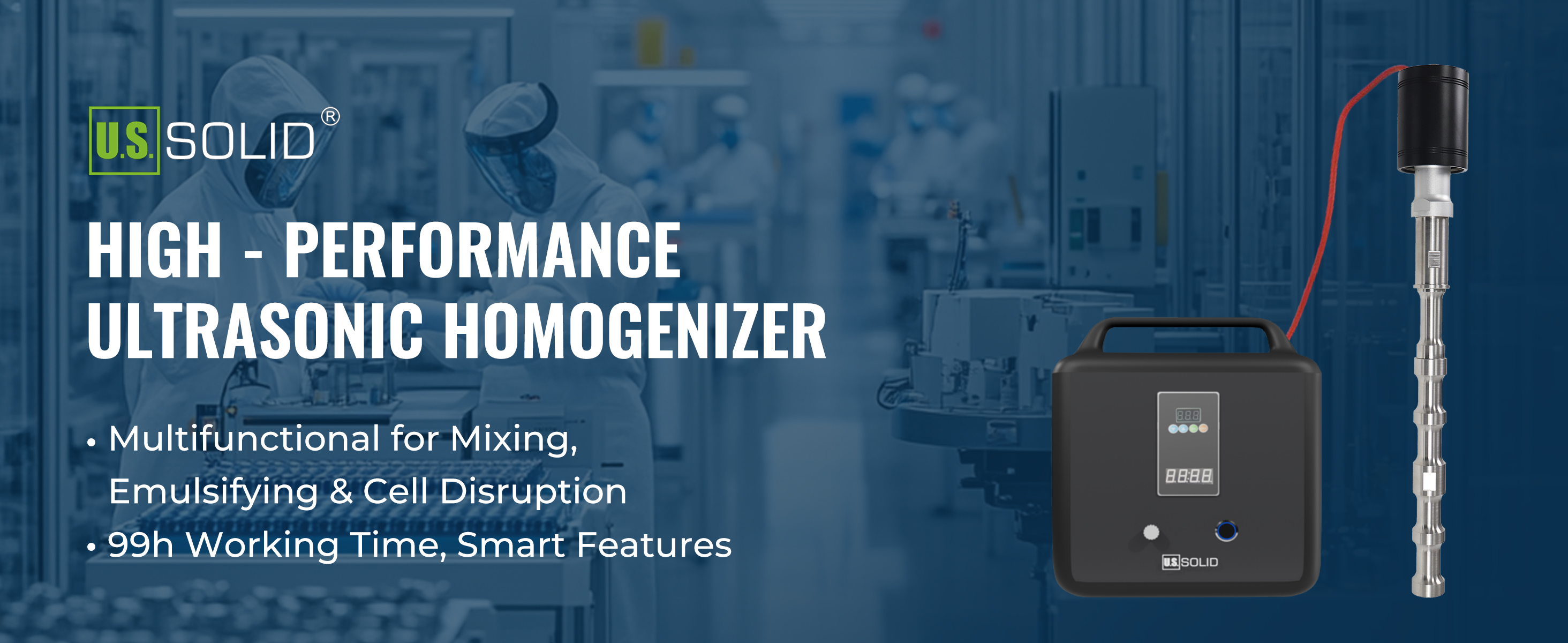
INTRODUCTION
Ultrasonic homogenizer for use in a laboratory for the purposes of mixing, emulsifying, homogenizing, disrupting cells, and reducing particle size in a sample.LCD Digital display, 99 hours Power, variable output for pulsation, temperature indicator to prevent overheating, easy to use programming for optimal efficiency, automatic amplitude control, sound abating chamber to reduce cavitation noise, Ultrasonic Power of 0-100% depending upon needs.
FEATURES

APPLICATIONS

OPERATION PERFORMANCE
EMULSIFICATION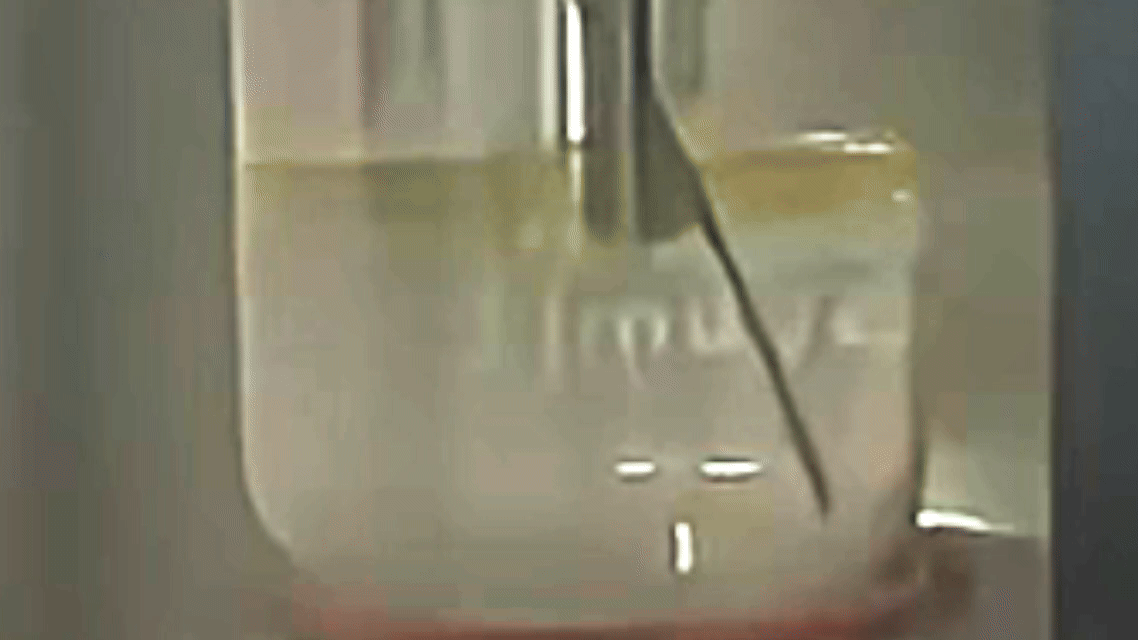
|
DISPERSION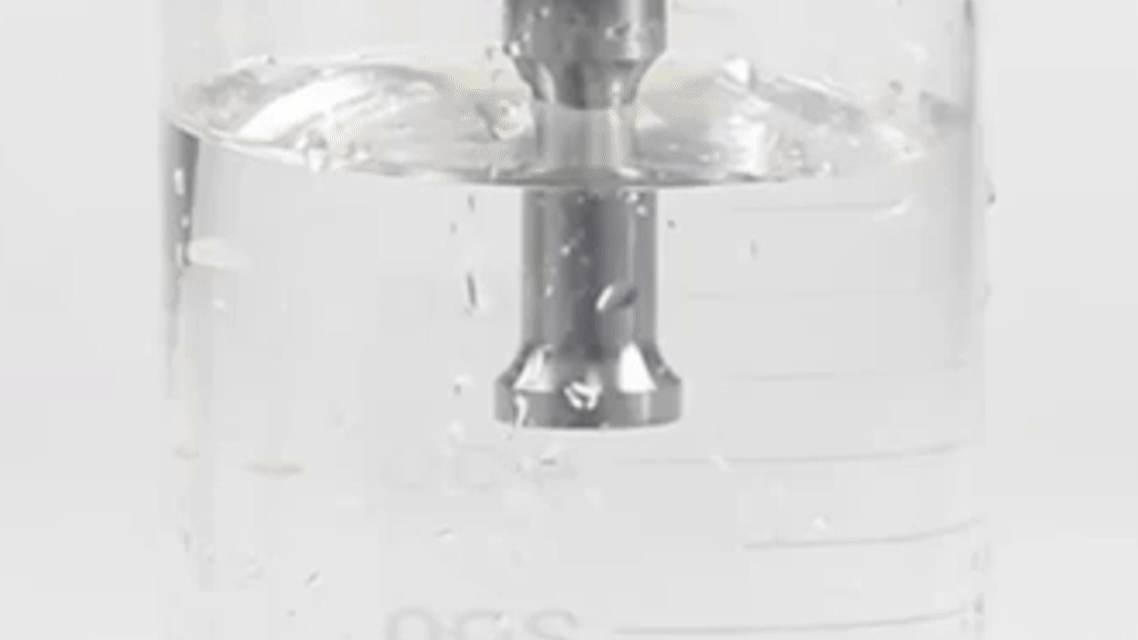
|
SPECIFICATIONS
| Model | USS-FX00080 | Processing capacity | 1-3 L |
|---|---|---|---|
| Power | 160 W | Ultrasonic Power | 480 W |
| Total Length | 22.83 inch | Length of Amplitude | 9.8 inch |
| Diameter of Probe | 0.6 inch | Adapting Reactor | 5 L (Inner Φ 7" * H10.6") |
| Frequency | 19-26 KHz | Working Mode | Pulse, Time, and Continuous |
FAQ
1. Can ultrasonic output be started when the probe tip is exposed in the air?
No. Ultrasonic output should never be started when the probe tip is exposed in the air.
2. Does the apparatus need an industrial frequency transformer for the Total Length?
No. The apparatus adopts switching Total Length without industrial frequency transformer. Do not touch randomly after opening the generator housing to avoid electroshock.
3.Does the apparatus need to warm up before use?
No. The apparatus does not need to warm up and should be grounded well when in use.
4.In what kind of environment can the apparatus be used?
It should be used in the environment free from moisture, sunshine and corrosive gases.
5.How should the correct use regarding the platform and ultrasonic probe be ensured?
The platform should be tightly fixed to the rod, and the ultrasonic probe should be in liquid and not touch the walls of the sample vessel.
PACKING LIST
- Ultrasonic Host x1
- Ultrasonic Probe x1
- Lifting Table with Non-slip Mat x1
- Temperature Sensor x1
- Power Cord x1
- Cable x1
- Fuse x1
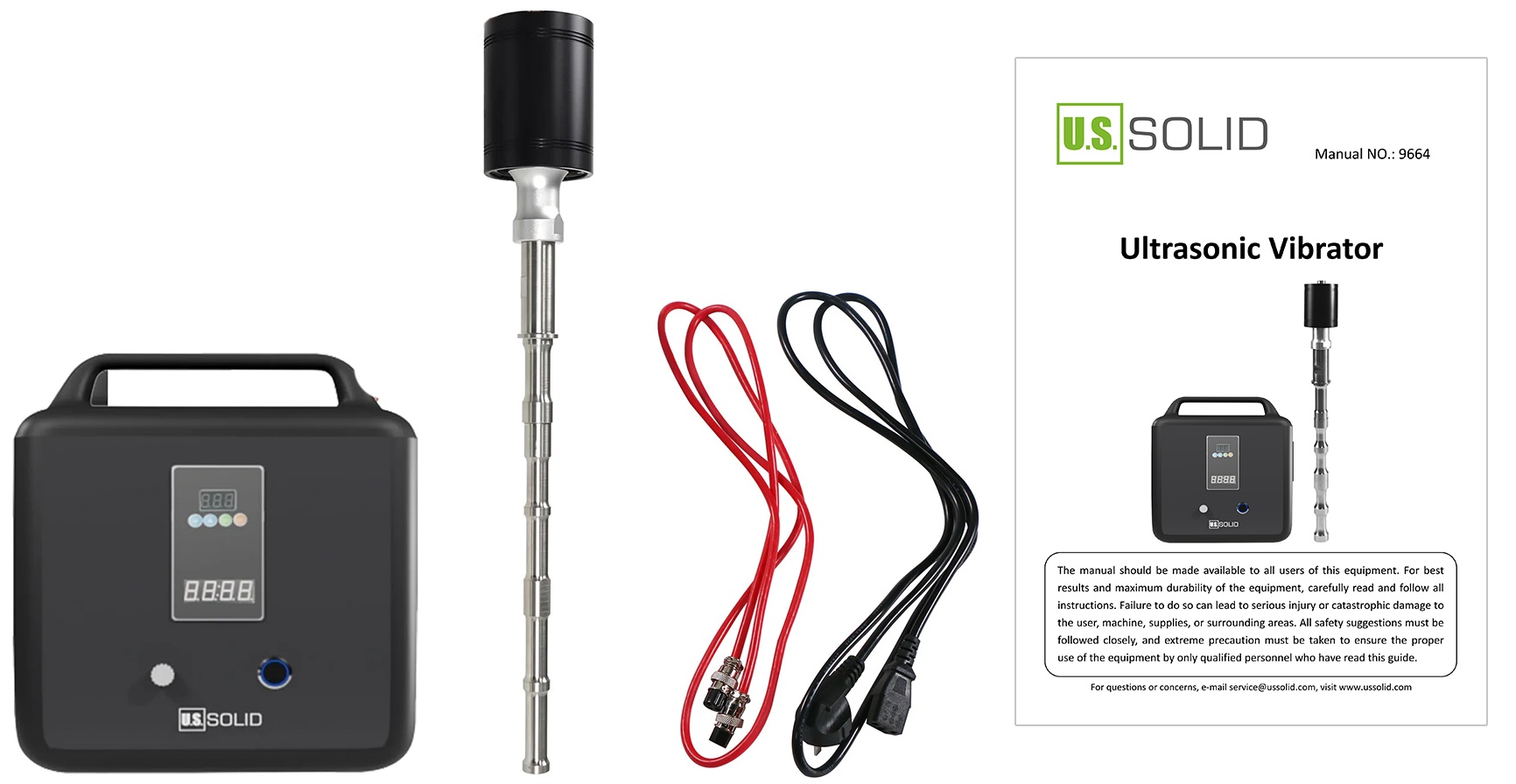
WARNING
1.The liquid temperature will increase rapidly due to the cavitation effect during crushing. Pay attention to the temperatures for different cells and consider adopting multiple short - time crushing (not longer than 5s each time) and ice bath cooling.
2.Multiple short - time operations (working time 1 - 2s and interval time 1 - 2s) have better effects than continuous long - time operations to avoid liquid heating.
3.The horn end will become rough due to cavitation corrosion after being used for a period of time. Use oil stone or rasp to smooth, otherwise it will influence the working effects.
4.For long - run operations with sample heating, gross sample heating can be minimized by nesting the sample vessel in an outer vessel containing ice, selecting longer interval (gap) times, or using a specially fabricated leptomastic ultrasonication vessel (available as an accessory).
5.If the liquid volume containing the sample is less than 5 ml, choose an ultrasonic probe having a tip diameter of 2 or 3 mm, and ensure the depth and distance requirements are met.
Download user manual here

INTRODUCTION
Ultrasonic homogenizer for use in a laboratory for the purposes of mixing, emulsifying, homogenizing, disrupting cells, and reducing particle size in a sample.LCD Digital display, 99 hours Power, variable output for pulsation, temperature indicator to prevent overheating, easy to use programming for optimal efficiency, automatic amplitude control, sound abating chamber to reduce cavitation noise, Ultrasonic Power of 0-100% depending upon needs.
FEATURES
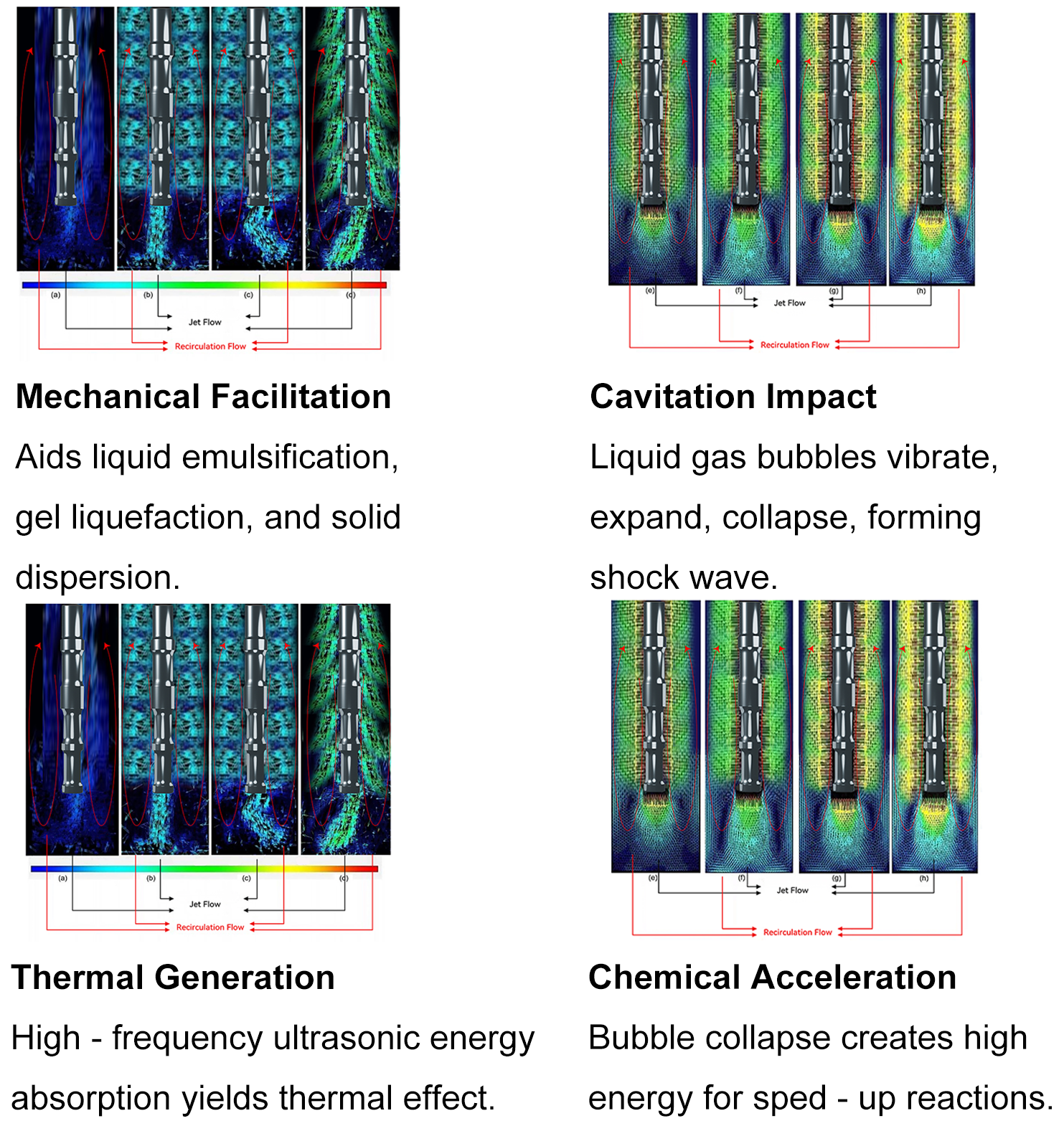
APPLICATION

OPERATION PERFORMANCE
EMULSIFICATION

DISPERSION

SPECIFICATIONS
| Model | USS-FX00080 | Processing capacity | 1-3 L |
|---|---|---|---|
| Power | 160 W | Ultrasonic Power | 480 W |
| Total Length | 22.83 inch | Length of Amplitude | 9.8 inch |
| Diameter of Probe | 0.6 inch | Adapting Reactor | 5 L (Inner Φ 7" * H10.6") |
| Frequency | 19-26 KHz | Working Mode | Pulse, Time, and Continuous |
FAQ
1. Can ultrasonic output be started when the probe tip is exposed in the air?
No. Ultrasonic output should never be started when the probe tip is exposed in the air.
2. Does the apparatus need an industrial frequency transformer for the Total Length?
No. The apparatus adopts switching Total Length without industrial frequency transformer. Do not touch randomly after opening the generator housing to avoid electroshock.
3.Does the apparatus need to warm up before use?
No. The apparatus does not need to warm up and should be grounded well when in use.
4.In what kind of environment can the apparatus be used?
It should be used in the environment free from moisture, sunshine and corrosive gases.
5.How should the correct use regarding the platform and ultrasonic probe be ensured?
The platform should be tightly fixed to the rod, and the ultrasonic probe should be in liquid and not touch the walls of the sample vessel.
PACKING LIST:
- Ultrasonic Host x1
- Ultrasonic Probe x1
- Lifting Table with Non-slip Mat x1
- Temperature Sensor x1
- Power Cord x1
- Cable x1
- Fuse x1
- User manual x1

WARNING
1.The liquid temperature will increase rapidly due to the cavitation effect during crushing. Pay attention to the temperatures for different cells and consider adopting multiple short - time crushing (not longer than 5s each time) and ice bath cooling.
2.Multiple short - time operations (working time 1 - 2s and interval time 1 - 2s) have better effects than continuous long - time operations to avoid liquid heating.
3.The horn end will become rough due to cavitation corrosion after being used for a period of time. Use oil stone or rasp to smooth, otherwise it will influence the working effects.
4.For long - run operations with sample heating, gross sample heating can be minimized by nesting the sample vessel in an outer vessel containing ice, selecting longer interval (gap) times, or using a specially fabricated leptomastic ultrasonication vessel (available as an accessory).
5.If the liquid volume containing the sample is less than 5 ml, choose an ultrasonic probe having a tip diameter of 2 or 3 mm, and ensure the depth and distance requirements are met.
Download user manual here







